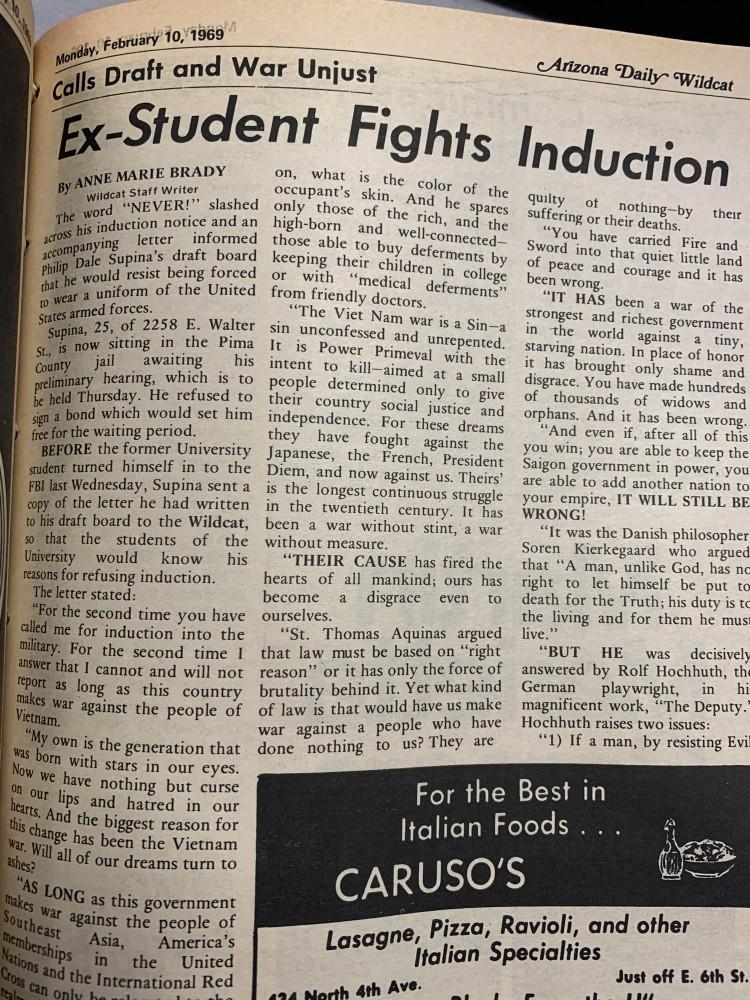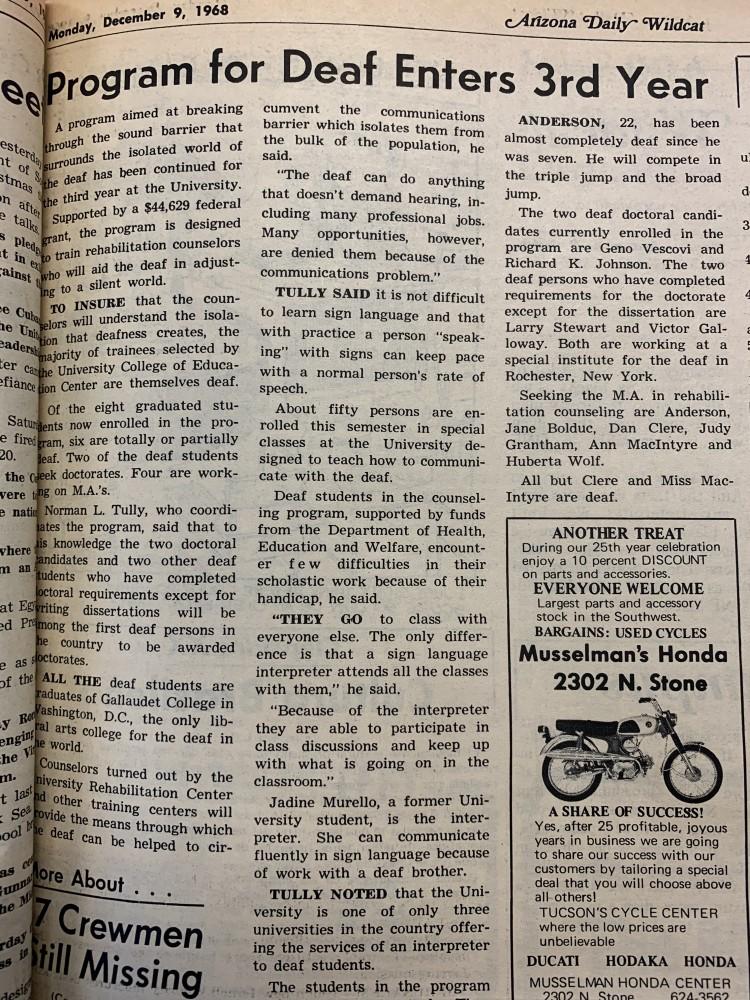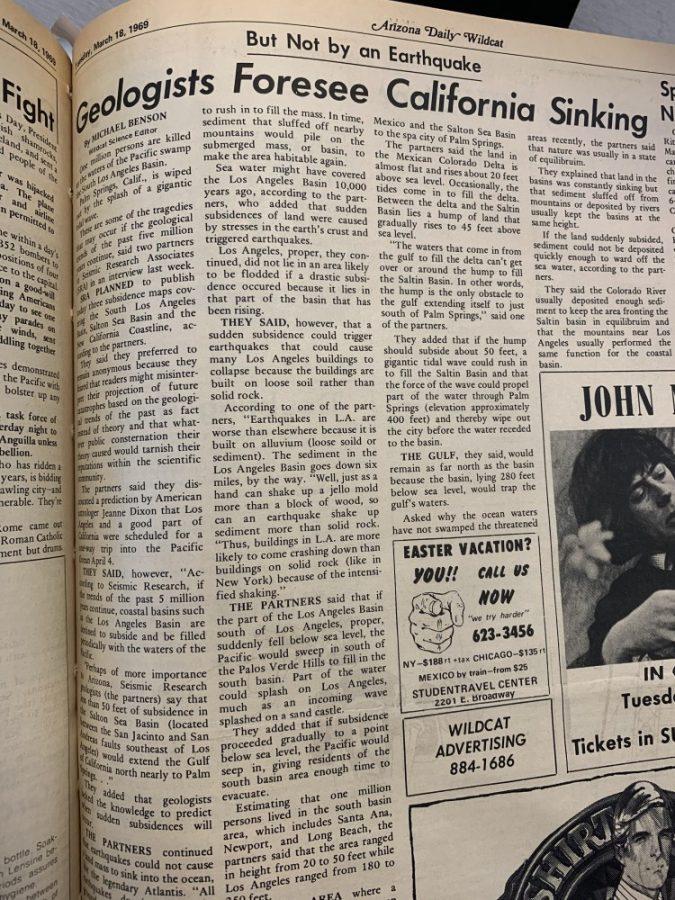Daily Wildcat reporters Claudio Cerrillo and Mikayla Kaber took a look at our past archives and chose top articles they feel should be highlighted from the school year of 1968-69.
Mikayla Kaber:
“Geologists Foresee California Sinking” written by Michael Benson, Wildcat Science Editor; March 18, 1969
California sinking? The article dives deep into geological science and how different variables within California’s land mass could have affected the sinking of the entire state.
The sources used in the article were two partners in Seismic Research Associates. They remained anonymous within the article in fear of people mistaking their theory for fact, and “whatever public consternation their theory caused would tarnish their reputations within the scientific community.”
This was a controversial topic, and Benson explored different variables that would lead to the sinking of California. Some reports in the article claimed that California would sink on April 4, 1969; however, the scientists debunk this theory and instead offer their insights into the variables that could have an effect.
Though known for its many earthquakes, California would not sink due to one, according to the article. The partners discussed in depth how a sinking would occur because certain coastal basins, such as Los Angeles and the Gulf of California, could fall victim to sudden subsidence.
“Sudden subsidence of the land mass below sea level would cause coastal waters to rush in and fill the mass,” the partners said.
Of course, the sinking of California has still not occurred since the writing of this article in 1969. Yet, in today’s scientific world, the California Sinking theory is still widely discussed with varying opinions on the matter.
RELATED: Camp Wildcat’s lifelong friendship between alumni and students

“Ex-Student Fights Induction” written by Anne Marie Brady, Wildcat Staff Writer; February 10, 1969
On Feb. 10, 1969, former UA student Philip Dale Supina sent a copy of a letter to the induction board to the Daily Wildcat. He sent the letter to the Daily Wildcat so “the students of the University would know the reasons for refusing induction.”
According to the article, it was his second time being sentenced to the Vietnam War draft, so he was going to do everything in his power to resist fighting a war that he deemed a “sin unconfessed, and unrepented.”
Supina’s letter was filled with themes from the Bible and words of hate for the draft that he felt was unjustly being forced upon him.
“It has been a war of the strongest and richest government in the world against a tiny, starving nation,” Supina said. “In place of honor it has only brought shame and disgrace.”
This instance was the second refusal of induction, and Supina turned himself into the FBI. After the letter was written, he had to await a hearing in the Pima County Jail.
Supina’s letter gave UA students a glimpse of the dark political reality that came with the Vietnam War. Today, the Vietnam War is still widely considered controversial. According to the US Archives, almost 60,000 Americans died during it.
RELATED: UA alum takes Daily Wildcat experience to the TV screen

“Program for Deaf Enters 3rd Year” written by unknown author; Dec. 9, 1968
In 1968, University of Arizona’s newly established Deaf Program received a grant of $44,629 to help support the program’s counselors and the students they were working with.
According to Norman L. Tully, the coordinator of the Deaf Program at the time, two of their deaf students went on to be among the first in the country to receive doctorate degrees.
There were eight participants at the time and six of them were deaf or hard-of-hearing.
“They go to class with everyone else. The only difference is that a sign language interpreter attends all the classes with them,” Tully said.
According to Tully, the UA was one of three universities at the time that gave access to interpreters for deaf students. Since 1973, Section 504 of the Rehabilitation Act now requires all universities and post-secondary schools to provide interpreters to deaf and hard-of-hearing students.
Claudio Cerrillo:
Over 19,000 to Start Registration Today, written by unknown author Sept. 12, 1968
With registration for the Spring 2020 semester right around the corner, students all throughout the university have the pleasure of browsing for classes and adding them to their shopping cart via UAccess, an online tool.
While registration today has its ups and downs, with the crashing and slow servers being all too common, the class of 1969 did things in more of an “analog” fashion.
According to the article, over 19,000 students were expected to register for Spring 1969 semester via paper and pencil. The article also detailed 6,000 of those students having already been pre-registered in advance.
Issues sprang up when many informational letters failed to reach students, which told to pick up their registration packets. There was also the said problem of building locations to pick up the packets, according to Herman Carillo, assistant to the university registrar at the time. David L. Windsor, the registrar, gave the example of the College of Nursing, which had moved “off-campus.”
Today, for the fall 2019 semester, there have been over 40,000 students enrolled as opposed to 1969. You can say that enrolling for college classes is a bit more accessible now.
Follow Claudio and Mikayla on Twitter















